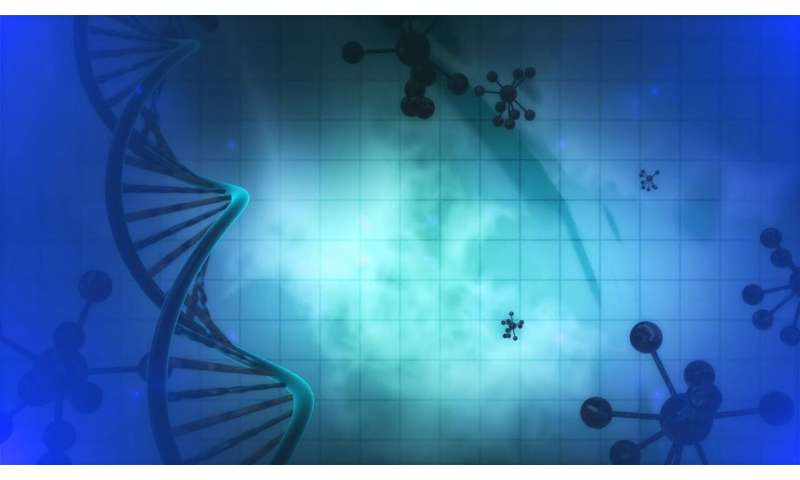
Neuroblastoma is a devastating solid tumor of childhood and emerges in the sympathetic nervous system while many kids who develop it are still toddlers.
Now, medical scientists in China who are studying neuroblastomas—and how to mitigate the worst forms of the cancer—say their newly developed strategy may ultimately alter the fate of children with the worst forms of the neuroendocrine tumor.
Currently the research, which is aimed at beating back a form of the disease caused by a gene-driven feedback loop, is being conducted in xenograft models, but scientists in China say their findings are compelling enough to warrant clinical testing.
Neuroblastomas have a wildly varied spectrum of clinical behavior that ranges from spontaneous regression to progressive disease and metastasis, report Drs. Yu-Feng Guo and Shi-Cang Yu. Both scientists conduct research in the Department of Stem Cell and Regenerative Medicine at Southwest Hospital and Third Military Medical University in Chongqing, China. The city is in the southwestern region of the country.
What makes neuroblastoma so difficult for families, the scientists say, is that it strikes children at an exceptionally young and vulnerable age. Guo and Yu spell out the details of their neuroblastoma research in Science Translational Medicine. Although the cancer strikes children around age five and under, the median age at diagnosis is just 18-months-old, the researchers say.
The tumors possess a number of genetic aberrations that have been extensively investigated. Among the chief concerns is the amplification of the gene MYCN, which is found in about 20 percent of patients. The gene has been identified as one of the strongest determinants of the tumor, but it also has prognostic value. Its presence aids in the prediction of unfavorable clinical outcomes and poor survival of high-risk neuroblastoma patients.
MYCN encodes N-MYC, a transforming gene and oncogenic driver. N-MYC plays multiple roles in neuroblastoma malignancy, Guo and Yu explained, and functions as a master transcriptional regulator that can activate genes involved in self-renewal, proliferation, pluripotency, angiogenesis and metastasis. N-MYC additionally suppresses the expression of genes that promote differentiation, cell cycle arrest and immune surveillance.
“We showed that aldehyde dehydrogenase family member ALDH18A1 exerts profound impacts on the proliferation, self-renewal, and tumorigenicity of neuroblastoma cells and is a potential risk factor in patients with neuroblastoma, especially those with MYCN amplification,” Guo and Yu wrote in Science Translational Medicine.
ALDH18A1 is multi-functional gene that carries the DNA blueprint for a mitochondrial enzyme, among other activities. Guo and Yu have shown that ALDH18A1 is a powerful gene because it regulates MYCN expression and with MYCN forms a positive feedback loop. Inhibiting the the ALDH18A1-MYCN positive feedback loop reduces MYCN-amplified growth, and thus the risk of the most malignant form of neuroblastoma, the team found.
They additionally revealed in their research that there is a way to subvert the activity of the feedback loop and reverse the otherwise fatal course encoded in the ALDH1A1-MYCN combination.
“Using molecular docking and screening, we identified an ALDH18A1-specific inhibitor, YG1702, and demonstrated that pharmacological inhibition of ALDH18A1 was sufficient to induce a less proliferative phenotype and confer tumor regression,” the researchers said.
YG1702 is a targeted protein that zeroes in on ALDH18A1, according to Guo and Yu.
Neuroblastoma is a cancer that develops from immature nerve cells, which can occur in multiple locations throughout the body. This untamed growth most frequently occurs in or within the region of the adrenal glands, which are situated on top of each kidney. However, neuroblastoma also can develop in other areas of the abdomen, or near the spine where nerves are in abundant supply.
The cancer is notorious for striking young children, although it rarely may affect children older than age five. While some forms of the cancer resolve on their own, others are the more aggressive form with deep genetic roots in the ALDH18A1-MYCN positive feedback loop, Guo and Yu say.
In the United States, an estimated 700 children are diagnosed annually with neuroblastoma, according to Children’s National Hospital in Washington, D.C.
Source: Read Full Article
